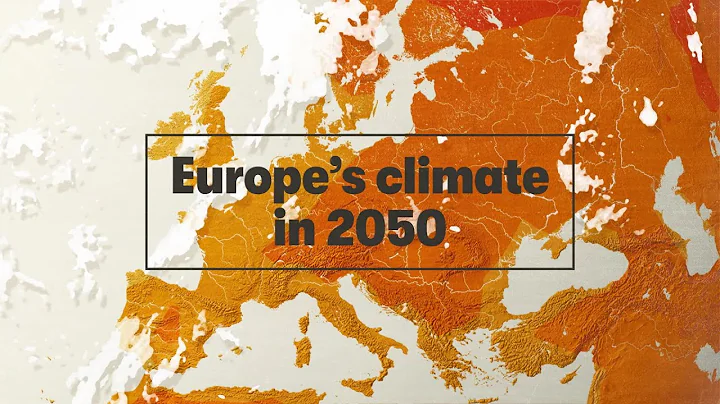
Steve Sasson is an electrical engineer . He invented the digital camera while working in Koda . The Rochester, New York-based company made its fortune by selling photographic film and paper for most of the 20th century, but the company did not think Sassen's digital cameras had a place in the photography industry, and ironically, the lack of vision led to Kodak's bankruptcy.
In July 2022, Kodak announced that it will repurpose some expensive high-tech machines to produce electric vehicle batteries.
A young engineer found a job in Kodak
In June 1973, Sassen (born in 1950) graduated from Rensselaer Institute of Technology in northern New York with a master's degree. That same month, he found his first (and last) job at Kodak.
Kodak usually doesn't recruit electrical engineers. They are hiring chemical engineers and mechanical engineers because cameras are of course mechanical, and photo processing equipment requires both disciplines. It is obvious that most of the cost of making a consumer-grade camera is spent on electronic and electrical components, such as film improvements, exposure control and flash control. All of this is implemented electronically, which makes hiring electrical engineers a new focus.
Sassen told PetaPixel: "When I interviewed there, I went to several places in Kodak." When I went to do the final summary, they asked me which field I was most interested in, and I was most interested in the research lab. They have taken on all kinds of problems and challenges, and of course, I like it. It is an interdisciplinary field of mechanical engineers, physicists and mathematicians, with a fascinating environment, which is why I chose it to start my career. ”
playCCD sensor
Sassen started working in the Applied Research Laboratory in the Instrument Department. This lab was involved in all the equipment-related work and had a wide range of franchise. It helped solve technical problems and looked into new ideas.
One day, Sassen's boss made a job proposal.
Sassen said: “He leaned on the filing cabinet in my office and asked me to choose a project between two jobs.” "He said, 'You can model the exposure control of XL movie cameras, or take a look at this new charge-coupled device . I'm curious how it works or what we can do with it. "
" I'm in the electronics group because I'm an electronics engineer. This is a new type of device that we have never used before. This is a two-dimensional exposed surface, much like film, but it is completely electronic.
"I said, based on my experience in college, I'm interested in using charge-coupled devices. He said, 'It's better to get one and see if there's anything useful or what we can do with it.'"
Charge-coupled Device (CCD) is an integrated circuit containing an array of coupled capacitors, which is widely used in digital camera imaging sensors along with CMOS.
Invented the digital camera
SASON worked fanatically on CCD and created a rough, larger digital camera representation.
Sassen explained, "I stole the lens from an old partbox in the XL movie camera manufacturing workshop." "Because the Super 8 movie format is larger than the CCD's active area, I can put it on the movie plane of the XL movie camera component and it will work.
This camera has only one electronic shutter , no mechanical shutter, and the shutter speed is 1/20s (or 50ms). It has an infrared (IR) blocking filter in front of it because it is very sensitive to infrared, which is incandescent, which is incandescent. A problem with light .
Sasson added a tape component, although he had thought about making a memory card to record images, it started working in December 1975. Digital camera was invented – Sasson made a major discovery after less than two years of working at Kodak.

Prototype digital camera. Offered by Eastman Kodak
Sasson said: "The Kodak management's reaction to me was curious and skeptical because it didn't feel like a major invention. "We don't feel like we invented anything."My feeling is that this is a very terrible outlook on what might happen in the future. Since the company's entire business model is focused on sensitive products, it is unpopular to advise them not to use any sensitive products. "
Kodak is hesitant to use an unproven new technology to encroach on its money tree business in film photography. "I'll walk in with my crazy-looking camera, which is probably the size of a toaster, but I can hold it." "Before I spoke, I took pictures of the people in the room. Then I took out the tape that stored the digital information and put it into the playback unit when the picture appears on the TV screen. This caught everyone's attention. "

prototype digital camera playback. Photos are provided by Eastman Kodak
" In fact, they didn't ask me what's going on," Sassen said. They just asked me why someone wanted to take pictures this way, and traditional photography wasn't a problem. No one (including his boss at Kodak) asked me to develop this camera. In fact, no one even knew I was flushing this camera.
" So, in many meetings in the spring and summer of 1975, the focus of the discussion was whether this could become a viable form of [photography]. If so, how long does it take? What are the conditions to get there? In 1975, we probably had some of the most in-depth discussions about digital photography in that conference room. "
Kodak's management may not want to dive into the digital photography industry, but Sassen himself continues to devote himself to the rabbit hole that will one day become an ubiquitous way of photography.
"I am fascinated by the idea of film-free photography so that I don't have to use consumables to take pictures. From that day in 1975, I worked in digital photography until I retired. So, I have been engaged in digital photography for longer than anyone else, which has given me a lot of motivation. "
The young inventor (at Kodak) has been asked all the time when he thinks this will work for consumers. Of course, he doesn't know.
"You feel desperate when you ask yourself questions that you can't answer. I called the research lab and asked how many pixels I needed to make a film photo equivalent to 110 film quality. This is the worst consumption model I can think of, so I chose the lowest level. They say 1 million pixels, 2 million pixels if they want color. I have 10,000 pixels of black and white, and I have to reach 2 million pixels of color. I used Moore's Law to calculate the time of 15-20 years. It turns out that this prediction is not bad, although the reasons are all wrong.
"I don't know what will happen during this time, but 18 years later we launched our first digital camera. So it's not a bad prediction, it's just a lucky one."

The first digital portrait is no longer there
The first photo is a photo of a technician Joey Marshall who works next to a teletypewriter just a few steps from the lab.
"She knew we were crazy people in the lab. There was nothing to take pictures in our lab. So I picked up the camera and walked a short walk along the corridor. When I saw her, I asked if I could take a picture of her.
"This is a weird looking device, all the electronic devices were hung outside, there was a lens in front, a viewfinder . She sat there and I took a picture of her head and shoulders, and it was the first time I took a picture of a person with a digital camera. "
The first digital photographer took the camera back and took off the tape. He put the video into the playback machine and saw her head and shoulder-length hair on the TV, black. The outline was clear, but her face was completely still and completely unrecognizable. When the photo appeared, she had already followed him back and stood at the entrance of the lab.
"It takes a job," she said, and turned away.

"The playback device was designed by me," Sassen recalled. "Each pixel was digitized into 4 bits, and when it was black, 4 were 0, and when it was white, 4 were 1."I serial encoding of these bits, put them on tape, and read them out of the software I wrote, which was a very rudimentary microprocessor at the time.
"I accidentally reversed the order of those fragments in my mind. So, if all the bits are 0 and black, there is no difference in order, so they are displayed in the form of values. If they are all light tones of white, there is no difference in any difference, they are displayed in white.
"That's why black hair and white background make sense, so we can see that the image is geometrically correct. But all the midtones represented by the variations of 1 and 0 are opposite, so this makes no sense.
"It took me about an hour to figure it out. Then I reversed some lines, and the lines were easier than changing the software, and the pictures were shown in the right form.
"Blacks and whites were both right, but any tones between 4 bits and 16th Gray were mixed together. You can see that her face and background are very good. We are very satisfied with this. It allows us to see that all the pixels are in the right place, which is a big reason for the game's success. But the continuous part of the image is screwed up.
"We spent a year studying the details of this imaging chain. Everything had to start from scratch. I couldn't get rid of anything. We had to develop the circuit, built it into the camera when playing back the unit test, and then connect it to the entire system to see if we could get that part of the signal chain to work."
Unfortunately, the first digital portrait photo quickly disappeared into history.
"We didn't save this image," Sassen said. "I didn't notice it, I'm just glad the camera worked, and then we spent six months trying to improve performance. If he saved this image, it might have some historical significance [and a lot of money as the first digital Mona Lisa!].

Prototype digital camera
image size and storing
These first digital images have file sizes of 10,000 pixels. This is a 100 pixels, 100 rows, each pixel, are digitized into 4 bits. If you put it in bytes, it will be 5000 bytes or 5kb (kilobytes).
images are recorded on 300-foot Phillips tapes. Normally, only two photos can be saved on each tape, but in terms of length and bit density, they can store about 30 photos. However, you will run out of tape very quickly, so they will be erased and reused.
This is a continuous experiment, constantly trying to improve quality. They didn't think of any historical milestones. Their main concern was to make it run better and faster. Sometimes the camera didn't work mainly because the CCD was unstable.
Kodak's Pushback
It is speculated that this photo had to be viewed on an electronic screen, i.e., the TV screen. The resolution and color reproduction of the photo print was much better than the NTSC signal on the TV at that time. . Print has been around for 100 years and it is a great way to save photos, store photos, retrieve photos, organize them into books - obviously, it's a big business. They also feel that people are happy with this approach, so it's completely strange to suggest that they store and retrieve images electronically.
So, it's not just the fidelity of the image. It's also its convenience, structure and infrastructure.
The inventor said: "But it's running into a lot of resistance." "I think it's weird because we have a slideshow business, letting people sit down and look at slideshows projected on the wall, but that doesn't make much difference.
"This is a barrier (it doesn't have enough details), but it's not the only barrier. Even if you have good resolution, the limit will be in the technical limits of NTSC or in the case of European PAL.
" So, we should rethink that 110 film is not a Kodak color slide, so if you take a picture with a 110 camera, you get a resolution that will be much lower than 35mm slides."
calculator or camera
" A question that people often ask is, how can it become a consumer device? "Remember the game." In fact, will consumers accept digital camera devices?"
" I had to make an analogy when I was giving a speech. I said, imagine a future camera as a calculator that just came out. HP launched their HP 35 a few years ago, and other companies have also launched calculators. This is the only digital product that is a bit like a consumer product.
"Consumers started using calculator, so I said, consider a calculator with a lens. This is what I envisioned as a camera, as small as a calculator.
"I said, if it could be improved to the point where it can handle all of these images, consumers would accept the calculator. Put the lens and CCD in, and the calculator can also be a camera. Compared with what I just showed, the calculator is very small.
This is the idea I proposed at the 1975 conference. This is a comprehensive attempt without much data support. "
That's about 10 years before the Macintosh computer (Macintosh) came out, and about 25 years before the Windows XP appeared. For Kodak management, the word "digital" is risky and unknown.
"They (Kodak) don't like the word "digital," Sassen said. "A completely digital product makes it look farther, as strange as it looks today, because there were no consumer digital products at that time.
" Digital technology looks profound, a little complex, with lots of wires, relatively small integration, microprocessors just came out, but they are very difficult to operate and have no good reputation. In fact, it is digital, which makes it even more distant, future, complex and dangerous.

Kodak's patent department wrote a letter to Sasson asking for a report on the invention of the new digital camera.
"When I wrote a technical report, when I filed a patent in 1978, I mentioned that it was an electronic still camera, not a digital still camera, so.
Below is a technical report written by Sassen entitled "Handheld Electronic Still Camera and Its Playback System":

Sasson with Camera
Where is the camera today?
"I keep the camera itself; it still exists. It's now in Kodak," said the inventor. "It was exhibited at the Smithsonian Museum for several years. They brought it back and placed it in the Kodak Museum. I kept the camera. I shouldn't. It was paid with R&D funds. You should destroy them after using up these things. Tax things.
"But I left the camera because it was too cool to throw away and no one cared, so I left it. I even lost it once, but got it back. If you see the back of the camera, it says "Please go back to Steve Sasson."
"When it started to become popular again in the early 21st century, people were surprised that I still had it. Of course, it was a historical document, so it was a historical artifact, but no one cared about the camera at that time. There was a tape in that camera. Unfortunately, there was nothing on that tape."

November 17, 2009, US President Obama awarded the Sasson National Medal of Technology and Innovation at a ceremony held in the East Hall of the White House
invented the digital camera
November 17, 2009, US President Obama awarded the Sasson National Medal of Technology and Innovation at a ceremony held in the East Hall of the White House. This is the highest honor awarded by the U.S. government to scientists, engineers and inventors
Sassen said: "I am very lucky to represent the employees of Kodak ... It makes me very humble to be such an infamous person."
Before Obama put the medal around Sassen's neck, the president turned around and looked at the photographers behind the East Hall of the White House and joked with them, "This photo is best good."
The president obviously likes to take pictures and meets him privately and has a good conversation about photography. He learned that the president would steal Pete Suzha’s camera to take pictures when Suzha wasn’t watching.
Review of the birth of an industry
“I didn’t try to shoot great (images) because the equipment I used limits me,” Sassen said of his pioneering work in digital photography. "It's the only one, and it's brand new. What I'm trying to show is a photography system.
" to take the idea of [photos] without consuming anything. The only thing that is consumed is joule energy. My idea is that I would like to suggest that consumers can take photos at some point in the future without using film, paper or any processing assistant. You can do it right away. That's what I think. So, our idea is, let's create a photography system and all its elements. However, compared to current photography systems, no element is good in image quality.
"I think if I could reach 2 megapixels, my idea would be feasible. In my opinion, what I think of is a range of 2 million to 3 million pixels, and once we get to that point, the argument I put forward in 1975 will be resolved. It's an acceptable image, but the quality is low in consumer photography."

1976 A letter from Sasson wrote to his father about his first digital camera patent.
"Now I don't know that from 1997 to 98, the CCD and the final CMOS imager will develop at a rate of about 1 million pixels per year. This is a speed of improvement that I don't think will happen."

A memo written by Sassen in 2007 contained background information on his 1976 letter to his father.
So many years have passed, Sassen regrets that Kodak could have seized the first-mover advantage in the field of digital cameras, but missed the opportunity.
" (Kodak filed for bankruptcy) made me sad. I foreseeed it and Kodak was boycotting it. For obvious reasons, they were unable to make money from digital photography that traditional photography could make, something I have been observing for many years.
" I retired from Kodak in 2009 because I thought they might disappear. I don't want them to do that either, but that's the case. Finally, I don't know what happened. I can see that if they take a different approach, the results may be different. Again, it's hard to accept changes in your basic business model. ”











